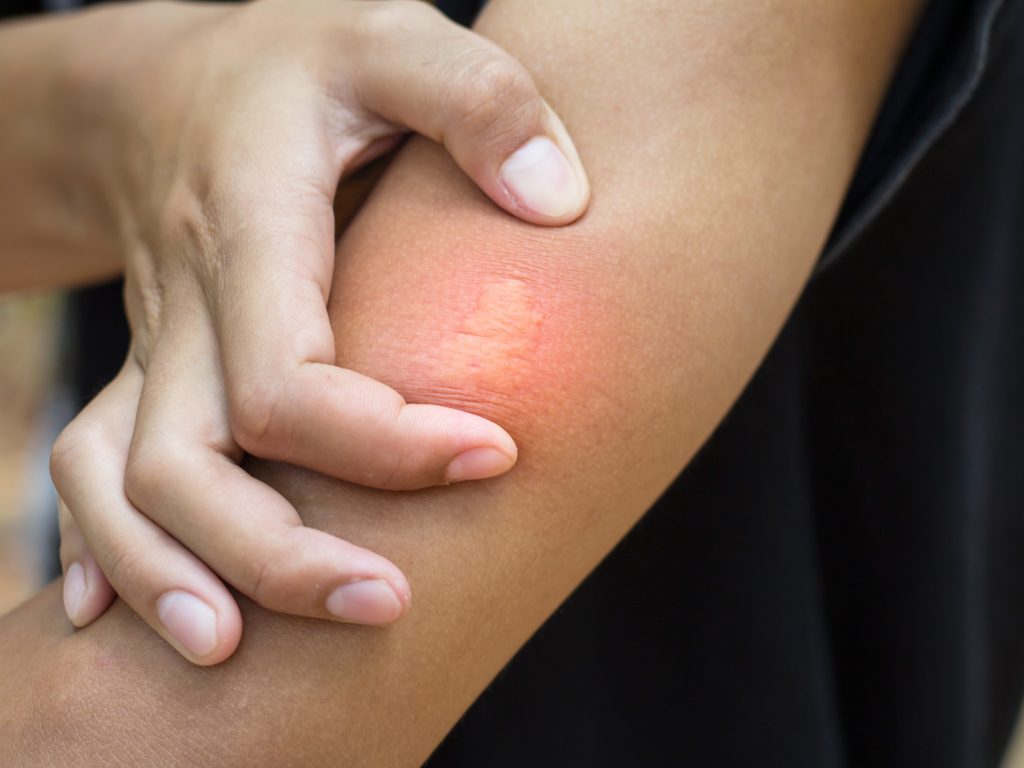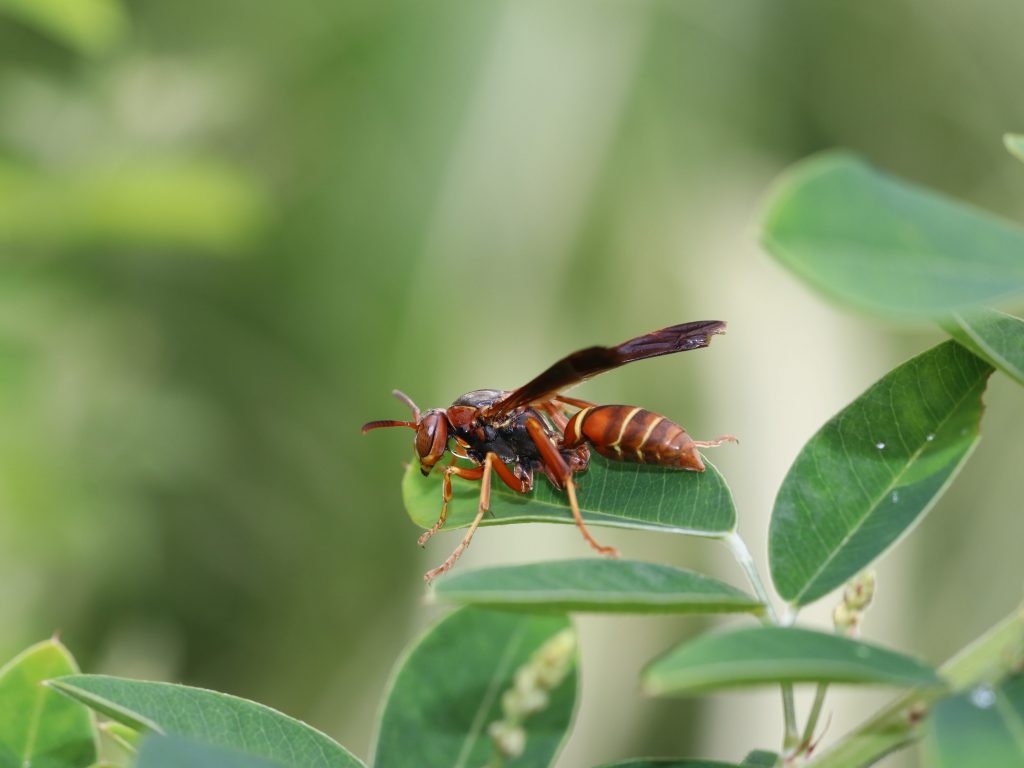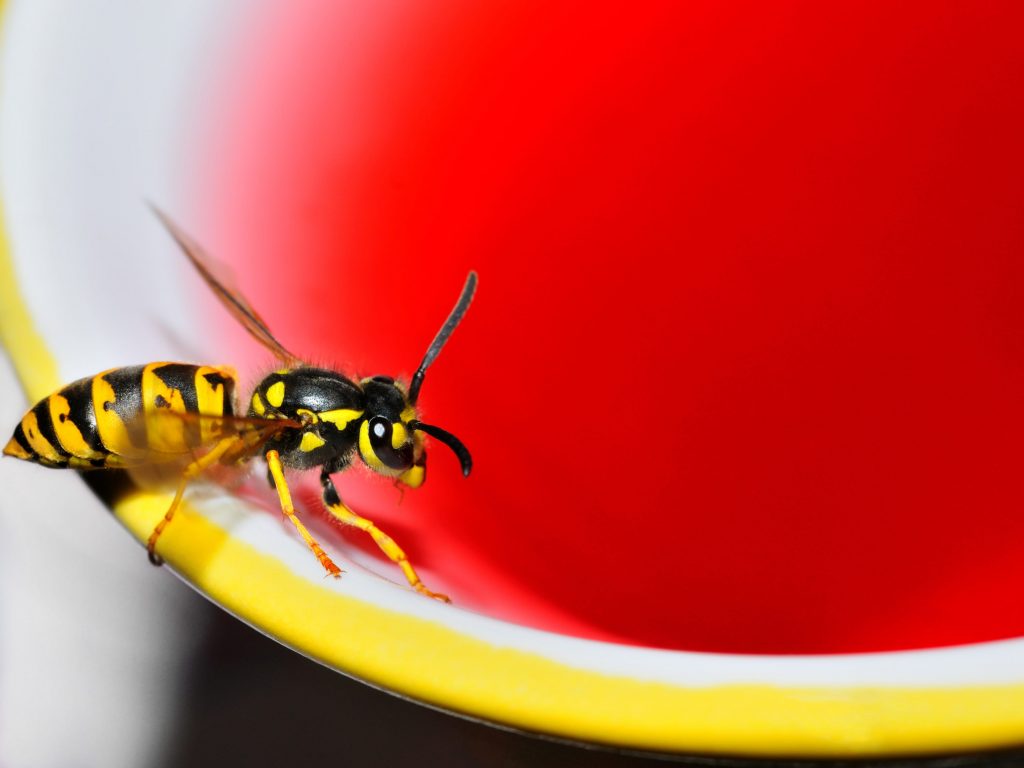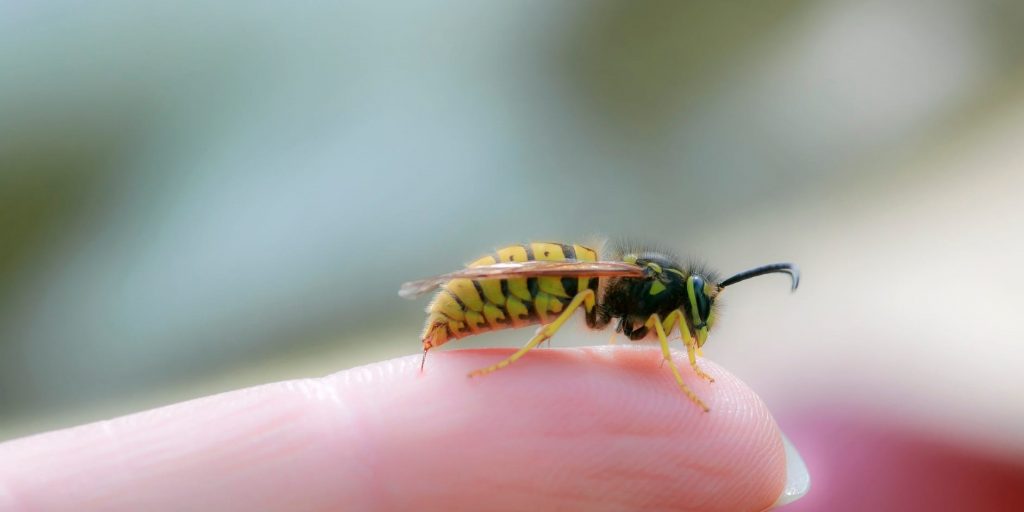- Wasps, which include yellow jackets and hornets, can be aggressive and sting multiple times.
- To treat a wasp sting, wash it with soap and water, then reduce swelling with ice and antihistamines.
- If you start having severe symptoms after getting a wasp sting, call 911 for medical help.
Stinging insects, like bees and wasps, can be a nuisance during the warmer months, when they are most active. While a sting from any insect can be painful, wasps are especially notorious.
That's because wasps are aggressive and can sting you many more times than, say, a bee would. Moreover, wasp stings are painful and irritating, and may even be dangerous if you have an allergic reaction.
Here's what you should know about wasp stings, how to treat them effectively, and what you can do to prevent them.
What does a wasp sting look like?

It can be hard to tell a wasp from a bee sting, except for one notable marker.
If you're stung by a honey bee, it will leave its stinger in your skin, appearing as a little black dot in the sting. Wasps, on the other hand, will keep their stinger, according to Keith Delaplane, who has a doctorate in entomology and serves as the director of the Honey Bee Program at the University of Georgia.
Symptoms
If a wasp stings you, you'll likely experience the following symptoms near the site:
- Redness and warmth
- Pain and swelling
- Hives
- Itchiness
The above symptoms are common and not a sign of an allergic reaction, Delaplane says.
Allergic reaction and complications
Dr. Courtney Jackson Blair, an allergist and immunologist at Privia, says people experiencing an allergic reaction to a wasp sting will have symptoms that interfere with their ABCs: airway, breathing, and circulation. These symptoms could include:
- Hives or swelling that is well beyond the sting area
- Trouble breathing
- Tickling or tightness in the throat or chest
- Lightheadedness or dizziness
- Vomiting
- Fainting
Insect sting allergies are rare. And while some may only experience a mild allergic reaction, more severe reactions can be fatal. In 2017, for example, allergic reactions to insect stings killed 89 Americans, according to the Centers for Disease Control and Prevention.
Additionally, getting stung in the mouth or throat can also cause life-threatening symptoms, such as trouble breathing. If you think you are having a severe reaction to an insect sting, Blair says you should call 911 or your local emergency medical services right away.
Multiple stings
Wasps' aggressive nature and ability to sting more than once increases the risk that you might get more than one sting. Even if you are not allergic to insect stings, sustaining multiple stings could cause a severe reaction or other health complications.
One rare complication of multiple stings is kidney insufficiency or failure due to an influx of damaged tissue from the venom. This can happen days after the initial stings.
According to a small 2015 study, 20 to 200 stings are enough to result in kidney failure or death.
If you get multiple stings and are showing symptoms of a severe reaction, get medical attention promptly. If you aren't having a severe reaction, you can treat the stings at home, but you should talk to a doctor about what to do if other complications arise.
How to treat a wasp sting
1. Wash the affected site thoroughly with soap and water.
2. Apply ice to the sting area to decrease swelling and pain (leave it on for 10 minutes, then remove it for 10 minutes, over the course of 30 minutes to an hour).
3. Raise the body part where the sting is located to help reduce swelling.
4. To further treat swelling and itching, consider taking an over-the-counter antihistamine, like Claritin. You can also take Tylenol (acetaminophen) for pain relief.
5. If your symptoms worsen or begin affecting your ABCs, call 911.
Home remedies for wasp stings
There are also several home remedies you can use to treat wasp stings:
- Meat tenderizer powder. Mix non-seasoned meat tenderizer powder with a little bit of water. Then use a cotton ball to apply it to the sting area, and leave it on for 15 to 20 minutes. Meat tenderizer has a chemical called papain that can break down wasp venom to reduce pain and swelling.
- Baking soda. A paste of baking soda and a little water can also break down or neutralize the venom. as with the meat tenderizer, apply it to the sting area and leave it on for 15 to 20 minutes.
- Tea bag. A cool, wet tea bag can help fight inflammation and reduce swelling. Run it under cold water and apply to your skin for 15 to 20 minutes.
What does a wasp look like?
There are a number of different types of wasps, as well as other stinging insects that can look similar. Here's how to identify the different types of wasps and their lookalikes:

Wasps vs. bees
The main difference between wasps and bees is that bees are vegetarians and wasps are carnivores.
According to Delaplane, wasps feed off animal protein — which is why you might see them eyeing your hamburger at a summer barbecue.
Wasps are narrower than bees with pointed lower abdomens. Some types of bees, such as honey bees, will die after they sting, while wasps can sting more than once.
While both insects will defend their nest if threatened, wasps tend to be more aggressive and use their stinger as a weapon for hunting.
Yellow jackets vs. wasps
Yellow jackets are a type of wasp that often have black and yellow coloring.
They typically build nests underground, which can house a colony of up to thousands of the bugs, depending on the time of year. Disturbing a yellow jacket nest can cause a swarm.
Yellow jackets can be particularly aggressive in the fall, when their food sources become more scant.
Like other wasps, they are carnivorous and are attracted to other bugs as well as human food and sweet drinks. Accidentally drinking a beverage that a yellow jacket has landed in could result in stings to the mouth or throat.

Hornets vs. wasps
Hornets are a type of wasp that are often larger and thicker in size than other wasps. In the US, the most common hornets are the European hornet — which has yellow and brown coloring — and the bald-faced hornet — which is black and white.
They nest in hollow areas of trees and structures such as barns and prey on other insects as well as tree sap and fruit.
European hornets can be nocturnal and may be attracted to sweet human foods and drinks. Like other wasps, they can sting multiple times.
How to avoid wasp stings
Here are a few ways to avoid wasps and getting stung:
- Limit time outdoors during the day.
- When eating or drinking outside, keep food covered and use a lid for your beverage.
- If you're going to be in an area where there will be wasps, don't wear perfume or use scented soaps, since odors can attract the insects.
- Avoid walking barefoot in grass, as you could disturb a yellow jacket nest.
- If you have wasp nests on your property and are worried about getting stung, you should contact a professional about getting rid of them.
If a wasp comes near you, the best thing to do is stay calm and slowly walk away.
Insider's takeaway
Wasps can be bothersome and painful, but they're an important part of the natural ecosystem. For example, wasps pollinate flowers and prey on other insects and pests that damage crops and gardens.
However, wasps can be aggressive, especially if their nests are disturbed or if you swat at them while they are scavenging for food near you. In most cases, a sting will cause pain and swelling and can be treated at home with OTC medicine and remedies like meat tenderizer or baking soda.
But, if you start to have symptoms of a severe or allergic reaction such as trouble breathing, fainting, or tightness in the throat or chest, call 911 and seek medical help immediately.
